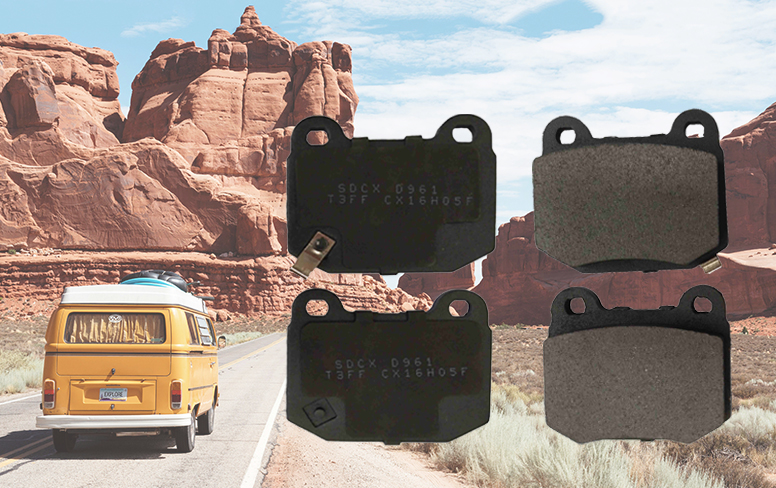+86 153 7870 3202
+86 153 7870 3202
Replacing your rear brake pads doesn't require a professional mechanic when you have the right tools and knowledge. Working with a trusted rear brake pad supplier and following proper safety procedures, you can successfully complete this brake pad rear replacement project in your home garage. Modern brake systems are designed for serviceability, and the rear brake pad replacement process follows a logical sequence that most DIY enthusiasts can master. Understanding the step-by-step approach will help you maintain your vehicle's braking performance while saving money on labor costs. This comprehensive guide covers everything from tool selection to final installation, ensuring you can confidently tackle this essential maintenance task.
Table of contents:
Tools You'll Need for Rear Brake Pad Replacement: Safety and Efficiency Tips
Step 1: Safely Lift Your Car and Remove the Wheel for Rear Brake Pad Work
Step 2: Compress the Caliper and Install the New Brake Pad Rear Step-by-Step
Gathering the right tools before starting your rear brake pad installation ensures safety and efficiency. You'll need a floor jack and jack stands rated for your vehicle's weight, as safety is key when working under a lifted car. A lug wrench or impact gun is necessary to remove wheels, along with a basic socket set (10mm, 12mm, and 14mm sockets) for most brake caliper bolts. Use a large C-clamp or brake piston compression tool to compress the caliper piston for new pads. Have brake cleaner spray, high-temperature brake grease, and clean rags ready for proper preparation. Most brake pad kits include hardware like clips and shims, but a basic screwdriver set and needle-nose pliers can help with small components. Safety glasses and work gloves protect you from brake dust and sharp edges. A brake bleeding kit is optional but useful if you open the brake system, though most pad replacements don’t require bleeding. A flashlight or work light improves visibility, and a magnetic parts tray keeps small bolts and hardware organized.

Proper vehicle lifting and wheel removal are key to safe rear brake pad replacement. Park on level ground, engage the parking brake, and loosen the rear wheel lug nuts while the wheel is still on the ground. Position your floor jack under the vehicle's designated jacking point, typically behind the rear wheel on the frame rail or pinch weld. Raise the vehicle until the rear wheel is off the ground, then place a jack stand under a secure support point near the jack. Never work under a vehicle supported only by a floor jack, as failure can cause injury or death. Once the jack stand is securely in place, remove the loosened lug nuts and pull the wheel straight off the hub. Check the wheel for brake dust or fluid leaks, which could indicate larger brake issues. If there’s corrosion, clean the wheel studs and hub surface with a wire brush to ensure smooth reinstallation. Place the removed wheel under the vehicle as extra safety backup in case the jack stand fails.
With the wheel removed and the vehicle securely supported, you can access the brake caliper to replace the rear brake pads. Locate the caliper, usually held by two bolts, and remove them with the correct socket. Carefully lift the caliper off the rotor and support it with a coat hanger or bungee cord to avoid straining the brake line. Remove the old pads, noting their orientation and any clips or shims that need to be reused. Use a C-clamp or piston compression tool to push the caliper piston back to make room for the new pads. Apply a thin layer of high-temperature brake grease to the pad backing plates and contact points, avoiding the friction surface. Install the new pads in the same orientation as the old ones, ensuring any arrows are correctly aligned. Replace any clips, shims, or hardware as needed, then lower the caliper over the pads and rotor. Reinstall and tighten the bolts to the manufacturer’s torque spec (usually 25-35 foot-pounds). Pump the brake pedal a few times to seat the pads before reinstalling the wheel.
Completing your own brake pad rear replacement provides both cost savings and valuable mechanical knowledge while ensuring your vehicle's safety systems remain in optimal condition. By following these systematic steps and using quality components from a reputable brake pad rear manufacturer, you can achieve professional-level results in your home garage.
Custom Service
For the past 15 years, Sencheer is supplying the global market with custom brake pads using OE technology. Our customization range is wide and free, which covers logo, label, brand box, carton design, spraying code etc.
Contact Number
+86 153 7870 3202
Navigation
+86 153 7870 3202
Songjia Town Development Zone, Lingcheng District, Dezhou City, Shandong, China